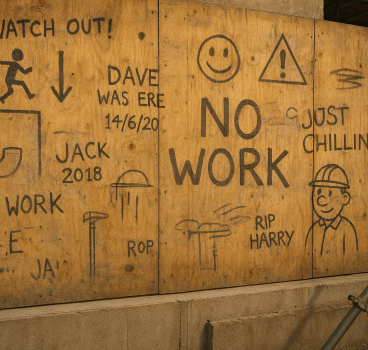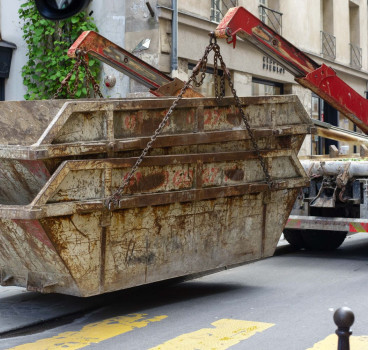Reinforced concrete - a material that reshaped the world of construction
The construction industry owes much to a 19th-century innovation - reinforced concrete. This composite material, combining concrete's compressive strength with steel's tensile resilience, revolutionised architecture and engineering. It enabled the construction of taller, more durable structures, fundamentally transforming urban landscapes and setting new standards in building design.
Long before modern reinforced concrete was developed, ancient civilisations were experimenting with early forms of the material. The Romans, in particular, are renowned for their innovative use of pozzolanic concrete, a mixture of volcanic ash (pozzolana), lime and water. This concoction, often combined with rubble or stones, allowed them to build architectural marvels like The Pantheon - still the largest unreinforced concrete dome in the world.
This innovation also allowed them to build aqueducts and baths, demonstrating remarkable durability and strength as well as ports and sea walls, many of which still stand today, thanks to the chemical resilience of Roman concrete when exposed to seawater.
However, while Roman concrete was strong in compression, meaning it could handle heavy loads pushing down on - it was weak in tension, so it did not perform well under bending or pulling forces. This made it unsuitable for structures requiring long spans or intricate shapes without significant support from arches or columns.
Fast forward to the 19th century, and we meet Joseph Monier, a French gardener working at the Tuileries Palace in Paris. Monier was frustrated with the fragility of traditional clay pots and concrete troughs used for plants. The problem? They often cracked under pressure or with changes in temperature.
Driven by a practical need rather than scientific curiosity, Monier began embedding iron mesh or wires into the concrete pots to strengthen them. He noticed that this combination significantly improved durability and resistance to cracking.
In 1867, he received a patent for “iron-reinforced troughs”, marking the official birth of reinforced concrete. What made Monier’s invention revolutionary was the marriage of two materials with complementary properties – concrete, excellent at delivering good compression (pushing forces) and iron, later steel, good in tension situations (pulling forces). When combined, the concrete protected the iron from corrosion and fire, while the iron carried the tensile loads that concrete alone could not handle.
Evolution of the concept
After his initial success, Monier realised the vast potential of his invention. He went on to patent applications for bridges, beams, pipes, floors and arched roofs. His work caught the attention of engineers and builders across Europe, including François Hennebique, a French engineer who greatly expanded on Monier’s concept. Hennebique developed a systematic approach to reinforced concrete construction in the 1890s, including an internal framework of steel rebars (reinforcing bars) that could be shaped to fit architectural needs.
While Monier originally used iron, steel quickly became the preferred reinforcement material by the late 19th century, due to its greater tensile strength. Steel also could bend without breaking, allowing it to absorb stress.

Steel and concrete expand and contract at similar rates, reducing the likelihood of cracking and concrete’s alkaline properties help protect steel from rusting. This combination allowed engineers to confidently design larger, taller and more complex structures without fear of material failure.
Initially, the use of reinforced concrete was somewhat experimental. Builders observed its performance and adapted accordingly. But by the early 20th century, engineering science caught up and reinforced concrete began to be studied, modelled and regulated.
Stress analysis techniques were developed to calculate the loads that reinforced concrete could bear. Building codes and standards were introduced to ensure safety and performance and new forms of reinforcement such as prestressed concrete and post-tensioned concrete emerged, offering even greater design flexibility and strength.
Legacy and impact
Monier’s simple innovation, driven by the need to make plant pots stronger, sparked a revolution in how we build. Reinforced concrete became the foundation of modern construction, allowing for today high tech and highly impressive buildings
However, when reinforced concrete first emerged in the late 19th century, many architects and builders were hesitant to embrace it. Stone, brick and timber had centuries of proven reliability behind them. Concrete, particularly reinforced concrete, was new and misunderstood. Early concrete was also not that pretty. Compared to ornate stone masonry or polished wood, raw concrete looked crude.
Furthermore, engineers did not fully understand how concrete and steel interacted. Without reliable calculations, many worried about collapse or unpredictable failure. The construction industry has always been conservative. New materials meant new risks and few were willing to gamble on a theory over time-tested methods. But as with most revolutionary ideas, a few forward-thinking pioneers saw the potential and began to prove the sceptics wrong.
While Hennebique was transforming Europe, we should also mention at this stage, Ernest L. Ransome, a British-born engineer based in the United States, who was pioneering reinforced concrete on the other side of the Atlantic.
Ransome’s major innovation was the introduction of twisted square steel bars as reinforcement. The twisted shape greatly improved the bond between steel and concrete. This enhanced the structure’s resistance to slippage under stress, increasing its overall integrity and laid the groundwork for the ribbed steel rebar we use today.
In 1884, he built what is considered one of the first reinforced concrete buildings in the U.S.: the Pacific Coast Borax Refinery in Bayonne, New Jersey. But the real proof of concept came in San Francisco, after the 1906 earthquake.
Many traditional buildings in San Francisco crumbled or burned. However, several of Ransome’s reinforced concrete structures, including parts of Stanford University’s campus, survived both the quake and fires with minimal damage. That was a powerful real-world demonstration of the material’s resilience.
Concrete’s turning point
Despite lingering doubts, the early 20th century saw a growing body of evidence-based confidence in reinforced concrete. Fire-resistant industrial buildings replaced flammable timber-framed factories. Concrete bridges began to outlast their steel or stone counterparts with less maintenance and public infrastructure such as reservoirs, aqueducts and sewage systems benefited from reinforced concrete’s durability and water resistance. Engineers could now calculate loads, design reinforcements and predict performance. This gave the material legitimacy in the eyes of cautious professionals.
Some landmark early structures that helped change minds included Hennebique’s bridge in Châtellerault, France (1899). It included a 160-foot span that proved reinforced concrete’s suitability for civil infrastructure.
The Alvord Lake Bridge (1889, Golden Gate Park, San Francisco), is one of the oldest surviving reinforced concrete bridges in the U.S., built by Ransome. The Ingalls Building (1903, Cincinnati) was the first reinforced concrete skyscraper. At 16 stories, it was a direct challenge to steel-framed high-rises and it’s still standing.
By the 1920s, reinforced concrete had largely won over the industry. It was no longer a risky novelty, but a mainstream material shaping the future of architecture and urban planning. A few other things further helped secure its dominance, particularly its versatility. It could be poured into almost any shape, enabling architects to push creative boundaries. Compared to steel or stone, it was also cheaper and required less skilled labour and with proper design and maintenance, reinforced concrete structures could last a century or more.
The early days of reinforced concrete were filled with doubt, debate and daring experimentation. But through the determined efforts of pioneers like Hennebique and Ransome, the material’s strengths were proven, structurally, economically and practically.
In recent years, research has focused on improving the sustainability of reinforced concrete. Developments include the use of recycled materials, self-healing concrete that repairs its own cracks and the incorporation of carbon fibres to reduce weight and increase strength. These innovations aim to address environmental concerns and extend the lifespan of concrete structures.
The invention of reinforced concrete stands as a monumental achievement in engineering and architecture. It transformed the possibilities of construction, enabling the creation of iconic structures and reshaping cities worldwide. As technology advances, reinforced concrete continues to evolve, maintaining its status as a fundamental material in building the future.
Additional Articles

Is construction site graffiti a form of folk history?
Walk onto almost any construction site and you will find writing, sketches and markings that serve a purpose beyond the practical. On timber hoarding, concrete shuttering, plasterboard and steel,...
Read moreWhat construction can learn from Ant colonies about logistics and site movement
If you want to witness flawless logistics, responsive movement and coordinated planning in action, you do not need to observe a hyper-automated warehouse or a cutting-edge construction site - you...
Read more

Why everyone has a favourite skip and what it says about you
In construction, there are two universal truths – tea, of course, is essential and believe it or not, everyone - whether they are prepared to admit it - has a favourite skip. It may sound strange,...
Read more